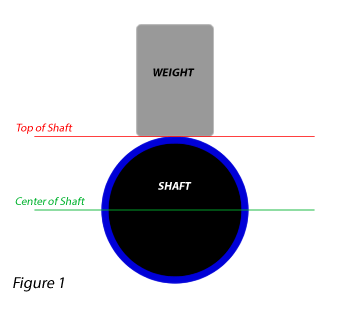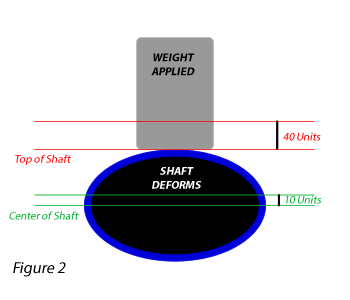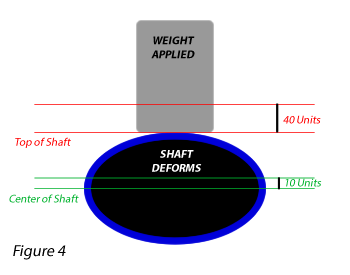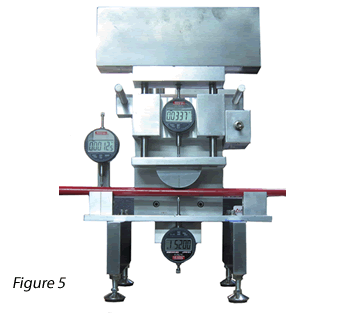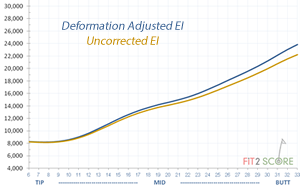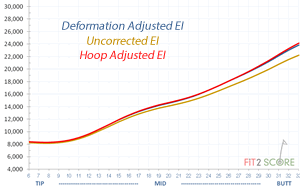Shafts KBS TOUR C-TAPER LITE
By Russ Ryden, A Golf Digest America’s 100 Best Clubfitter
Translation by Herve Francillon, BackSpin Fitting, Draguignan, France
Le C-Taper Lite est le nouveau venu de chez KBS. Le C-Taper est un de mes shaft favorit pour les joueurs recherchant une balle basse et pénétrante. Les profils sont réguliers de flex en flex, rendant facile le changement de poids et de rigidité pour coller parfaitement aux sensations et au vol de balle désiré par le joueur. Certains disent que c’est un C-Taper au régime ! Le C-Taper Light est le bon compromis pour un shaft leger avec un shaft qui garde une balle basse.
Le profil montre une légère différence avec le C-Taper. On a un shaft simplement plus léger avec les même caractéristiques en terme de vol et de sensations que le C-Taper. C’est la tendance actuelle. Abaisser le poids du club en général en diminuant le poids du shaft donnant un poids plus concentré sur la tête de club. Le C-Taper light est de cette génération de shaft plus léger tout en maintenant la rigidité d’un shaft plus lourd. Le C-Taper light est d’ailleurs différent en ce sens de la gamme KBS Tour. Il n’est pas plus souple et plus léger, il est simplement plus léger. Ca donne accès a un type de golfeur qui cherche le vol d’un C-Taper mais qui n’a pas le physique de manier un shaft à plus de 120 grs.
Les poids du C-Taper Lite peuvent être mélangé pour créer une série à poids croissant comme on pouvait trouver sur le shaft Nippon 999. Je joue ce type de montage et j’ai fitté beaucoup de mes clients dans ce sens. Ils adorent ça. Un 110 grs Stiff en soft stepped sur les longs fers, le 105 grs Reg en hard Stepped sur les petits fers. La même chose peut être réalisé en combinant le 115 grs XStif et le 110 grs Stiff. Quant au shaft pour fer 2 est une bonne option pour un shaft d’hybride pour les joueurs les plus costauds cherchant le contrôile de l’acier pour un hybride ou pour la dernière génération des ‘Fer Drive’.
Peu de temps avant la sortie du C-Taper Lite, j’ai enregistré cet entretient avec Kim Braly au PGA Tour Crowne Plaza Invitational. Cette interview a été tournée à côté du practice. On a parlé des journée de Kim au début des tournois, du fitting de fer et du C-Taper Lite.
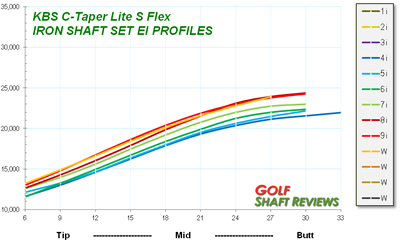 Sur le droite vous pouvez voir le profil du premier set KBS C-Taper Light Stiff que j’ai utilisé. Comme vous pouvez le voir le profil est parfaitement identique sur toute la série. Le poids du shaft pour cette série montée à +1″ de longueur était de 106 grs. A ce poids c’est une super option pour monter des clubs rallongés pour les grands joueurs où le poids peut être un problème.
Sur le droite vous pouvez voir le profil du premier set KBS C-Taper Light Stiff que j’ai utilisé. Comme vous pouvez le voir le profil est parfaitement identique sur toute la série. Le poids du shaft pour cette série montée à +1″ de longueur était de 106 grs. A ce poids c’est une super option pour monter des clubs rallongés pour les grands joueurs où le poids peut être un problème.
La gamme de poids du KBS C-Taper Lite est parfaite pour les joueurs un peu plus puissant que la moyenne. J’ai moi même fitté beaucoup de série pour créer un poids ascendant que j’ai monté sur des clubs Mizuno. La touche finale de ces séries est d’utiliser un shaft de fer 8 en stiff ou XStiff sur vos wedges. Cela crée un shaft pour spinner comme enseigné à l’époque par Royal Précision.




